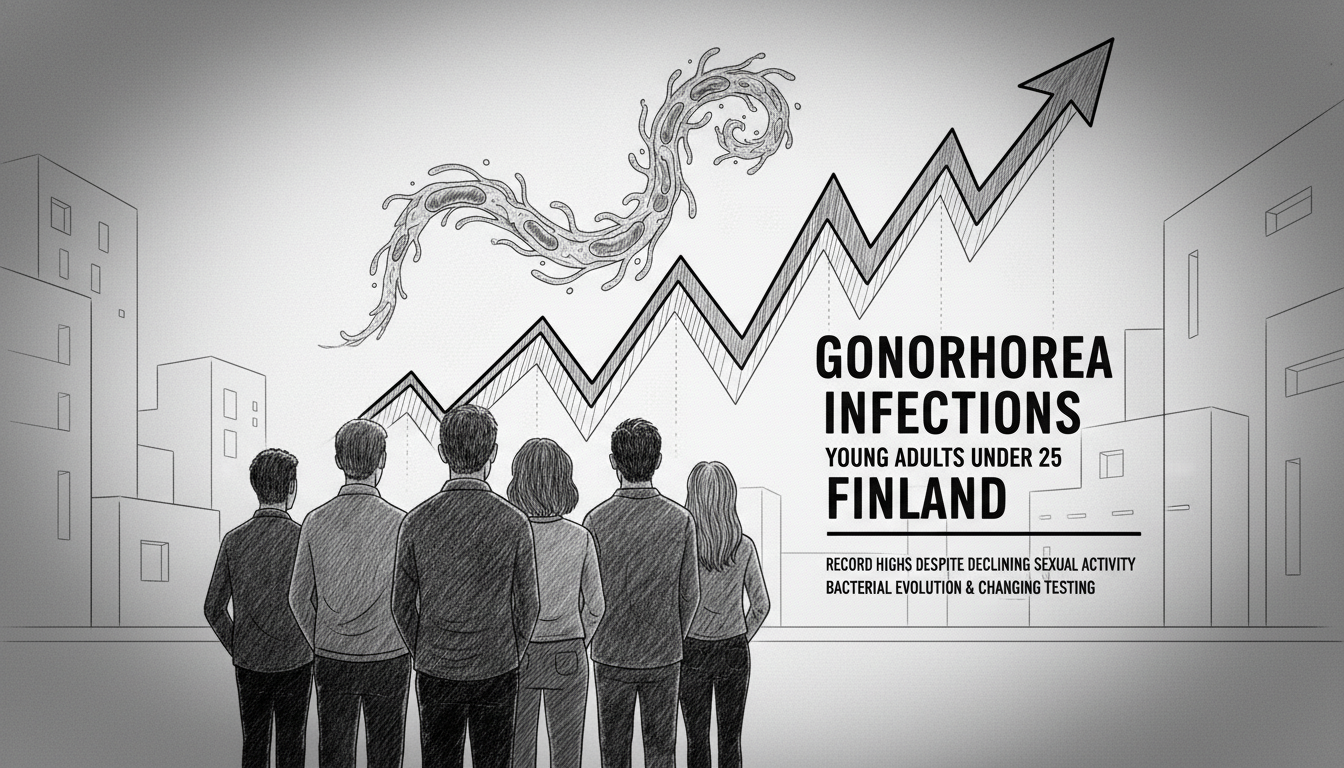Finland faces a troubling public health development as gonorrhea infections reach record levels despite declining sexual activity. Health authorities report over 1,890 cases this year, doubling the 2022 figures. This surge presents a medical paradox that has experts searching for answers.
Specialist physician Eija Hiltunen-Back from Helsinki University Hospital notes the infection pattern has shifted dramatically. Young adults under 25 now account for most cases, whereas gonorrhea previously affected primarily older men. The changing demographic raises questions about evolving social behaviors and bacterial adaptation.
The gonorrhea bacterium itself has transformed, becoming less symptomatic according to medical experts. This subtle evolution means infected individuals delay testing while unknowingly spreading the disease. Reduced symptoms create a silent transmission chain that complicates public health responses.
Testing behavior changes also contribute to the statistical increase. Health professionals now conduct more comprehensive screening, including throat swabs alongside traditional tests. Increased awareness drives more people to seek testing, capturing cases that might have gone undetected previously.
Helsinki reports the highest concentration of infections, particularly among its young adult population. This urban pattern suggests lifestyle factors and social networks play crucial roles in disease transmission. The capital's dense population and active social scenes may facilitate faster spread.
Simultaneously, chlamydia cases show decline with approximately 14,500 reports last year compared to 17,500 previously. The divergent trends between these sexually transmitted infections puzzle researchers. Both diseases share transmission methods yet demonstrate opposite trajectories.
National survey data reveals sexual frequency has decreased over twenty years from about six monthly encounters to four. This makes the gonorrhea surge even more perplexing for epidemiologists. The disconnect between behavior and infection rates challenges conventional public health models.
Hiltunen-Back acknowledges the complexity, stating statistics only reveal part of the story. Human behavior remains difficult to study comprehensively. The COVID-19 period demonstrated this when restrictions failed to reduce STI transmission as expected.
Dating apps and changing partnership patterns might explain some transmission dynamics. Young adults report having multiple partners more frequently, potentially creating complex transmission networks. These behavioral shifts occur alongside biological changes in the bacteria itself.
The situation mirrors broader European trends where gonorrhea rises as chlamydia declines. This suggests factors beyond national borders influence disease patterns. Antibiotic resistance and international travel likely contribute to the continental pattern.
Public health officials face the challenge of addressing rising infections amid behavioral complexity. They must develop targeted interventions for young urban adults while accounting for the bacterium's evolving nature. This requires balancing awareness campaigns with accessible testing services.
The gonorrhea surge represents more than just numbers—it signals changing social and biological landscapes. Understanding these interconnected factors will be crucial for effective public health response in Finland and beyond.

